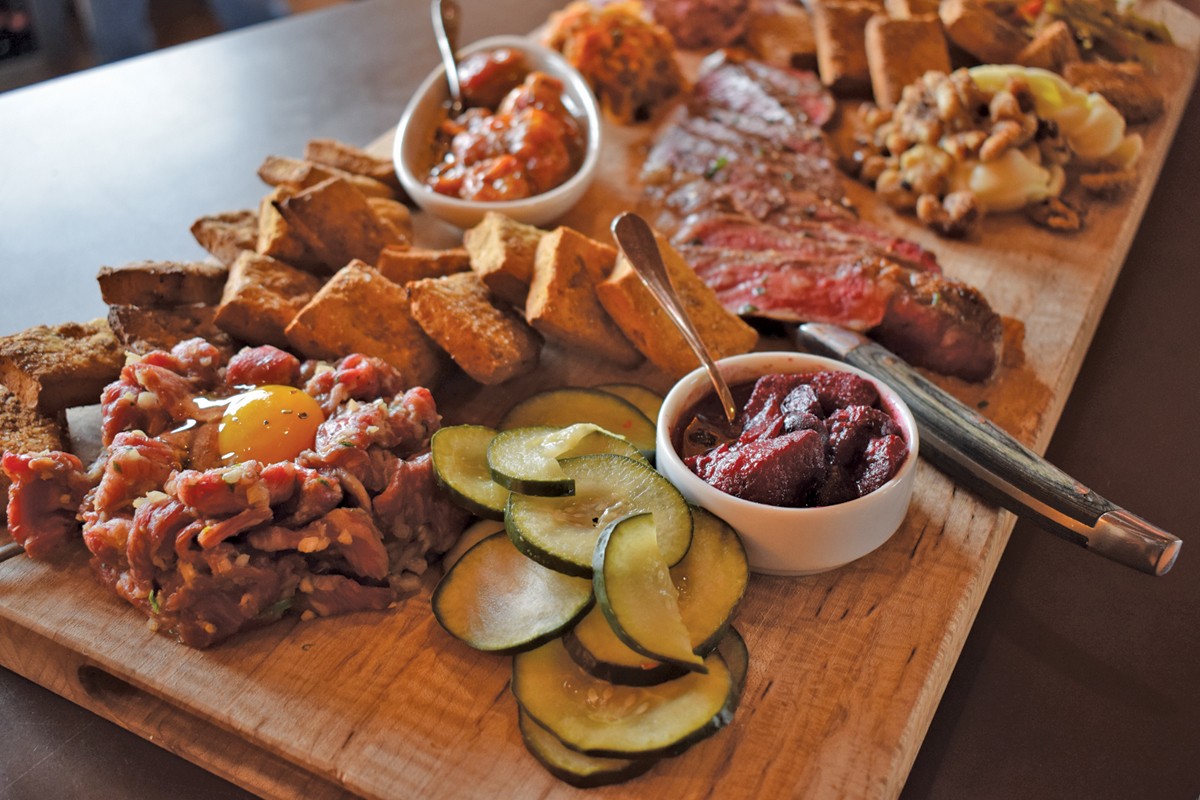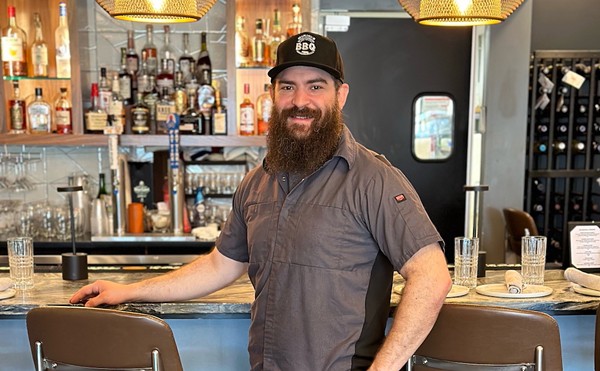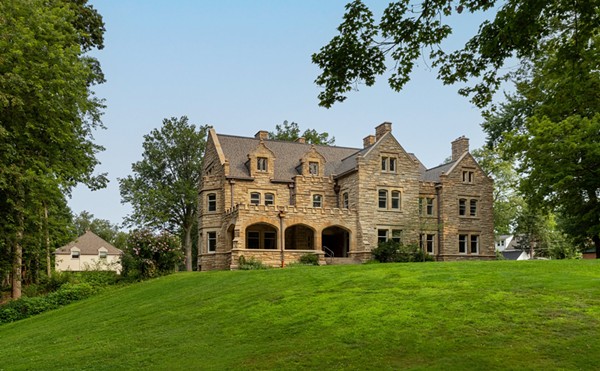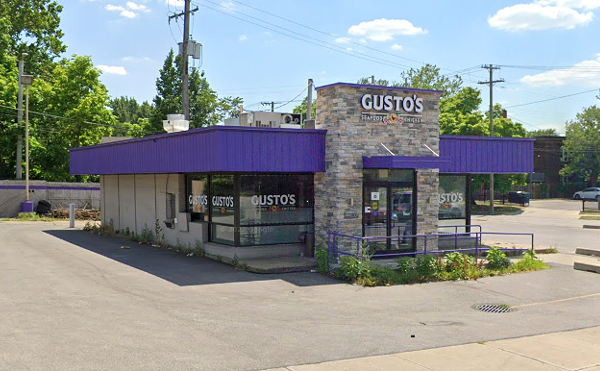Scott Webster guides me to the rear of Osso, the restaurant he and his wife Tara built on their 40-acre farm outside of Chardon. We walk briskly past the bar, through the dining room, and into the back of the sprawling commercial kitchen, none of which garners much consideration. What Webster dragged me back here to see, the feature he's so keen to show off, isn't a hot smoker or wine cellar or wood-burning oven; it's a curving metal corral that runs from the back door straight into the building.
"We have the luxury of saying that our animals never leave the farm," says Webster.
It's only then that I square the meaning of that sentence with the purpose of the chute. At Osso, dinner literally walks in the back door on its own four legs, at which point the animals are slaughtered and processed on site. While its sounds grisly, the entire system is purpose-built to minimize animal stress. Typical livestock get squeezed into the back of a trailer and driven for miles to a processor, where they confront unfamiliar animals and people. Webster's charges simply go for a short walk.
After purchasing the land in 2012, the Websters introduced some chickens into their lives. Chickens, the gateway animals that they are, soon opened the barn door to rabbits, ducks, turkeys, goats, pigs and cattle. Before they knew it, they were full-fledged farmers. The idea to build a restaurant on the property, says Scott, seemed like the logical next step, a way to share the bounty of humanely raised food with a wider audience.
Webster describes Osso as more of an agritourism business, where frequent bread-making, sausage-stuffing and butchery classes offer a glimpse into farmstead living.
To get to Osso, visitors turn onto a gravel lane that winds its way past a big red barn, greenhouses and a pasture full of steam-snorting steer. It took the Websters a little more than a year to erect the 10,000-square-foot building that would become the restaurant. Given the generous dimensions, you'd expect a complex capable of accommodating hundreds of guests, but this one maxes out at just 60 seats.
"We're not trying to hit the mass market," says Webster, who was a custom motorcycle builder in a previous life. "We're trying get people who appreciate what we're doing."
Once harvested, the meat becomes the responsibility of chef-partner Maggie Demko, a passionate cook who exudes wisdom beyond her 10 years in professional kitchens. Respect for the animals doesn't stop at the kitchen door, it simply changes course.
"We try and use every ounce of that animal in one way or another," Demko says of the Ossabaw Island and Mangalitsa breed pigs, Belted Galloway and Japanese Wagyu breed cattle, and every other animal reared on this quiet patch of earth.
Nose-to-tail cooking means that once the prime steaks, chops and loins have been extracted, the real fun begins. Hams are hung to cure into prosciutto, jowls into guanciale and shoulder muscles become coppa. Pork trotters and ears get transformed into delicious headcheese, while thick layers of fatback are rendered into lard or cured to become silky lardo. Extraneous bits are ground, seasoned and turned into terrines, pates and sausages. The bones, of course, are used to fashion stock.
Adhering to what she calls "Old World traditions," Demko and her team make nearly 90 percent of the food consumed in the dining room, plugging gaps with local produce and dairy while production catches up. Breads, pasta, pickles, cheese, kimchi, chutney, aioli and pretty much everything else is made in the partially open kitchen. Staffers work all week for just three days of dinner service, and two of those days, Friday and Saturday, are strictly prix fixe. Thursdays are a la carte.
"Prix fixe gives our chefs more creative freedom to craft dishes," Demko explains. "This way it's not about trying to create a bunch of different things. It's about creating a limited number of items that are really, really f-ing good."
Following a casual cocktail hour, during which guests sip, mingle and gaze at hairy beasts just outside the glass, it's time to take a seat. Meals start with a charcuterie platter of cheeses, meats, pates, crackers, pickles and fruit compotes. An amuse bouche signals the start of the meal proper, which is four to six courses on Fridays, and six to 10 on Saturdays. Recent meals have started with tortilla soup with pork, or chili with cornbread crackers. A seasonal salad and intermezzo come next, followed by rabbit-stuffed pierogi, fettucine carbonara or smoked beef-topped flatbread. The main event might be braised short rib gnocchi with a fried egg or Wagyu filet with black truffled potatoes. Meals always end with housemade desserts like bread pudding, chocolate mousse or honey cake with sour cream frosting.
Prices range from $80 to $150 depending on the meal.










